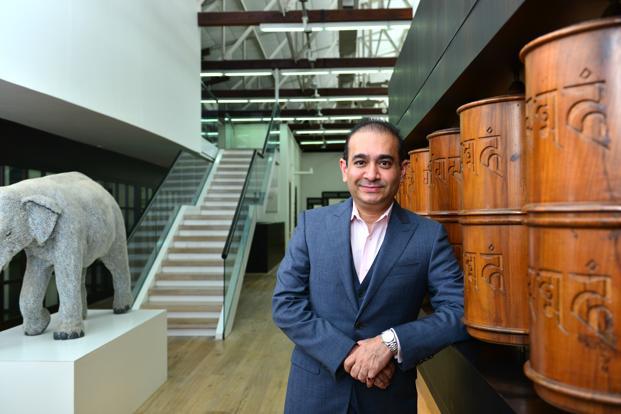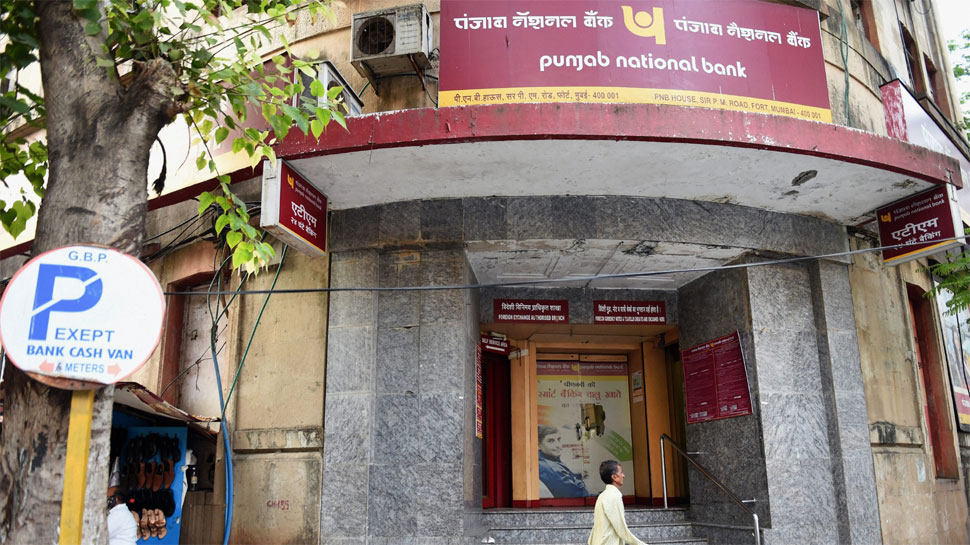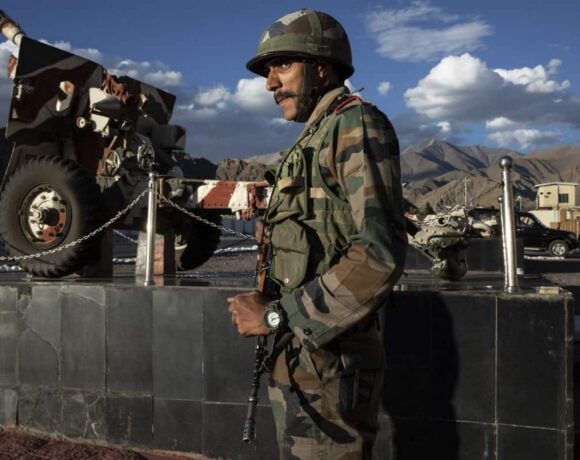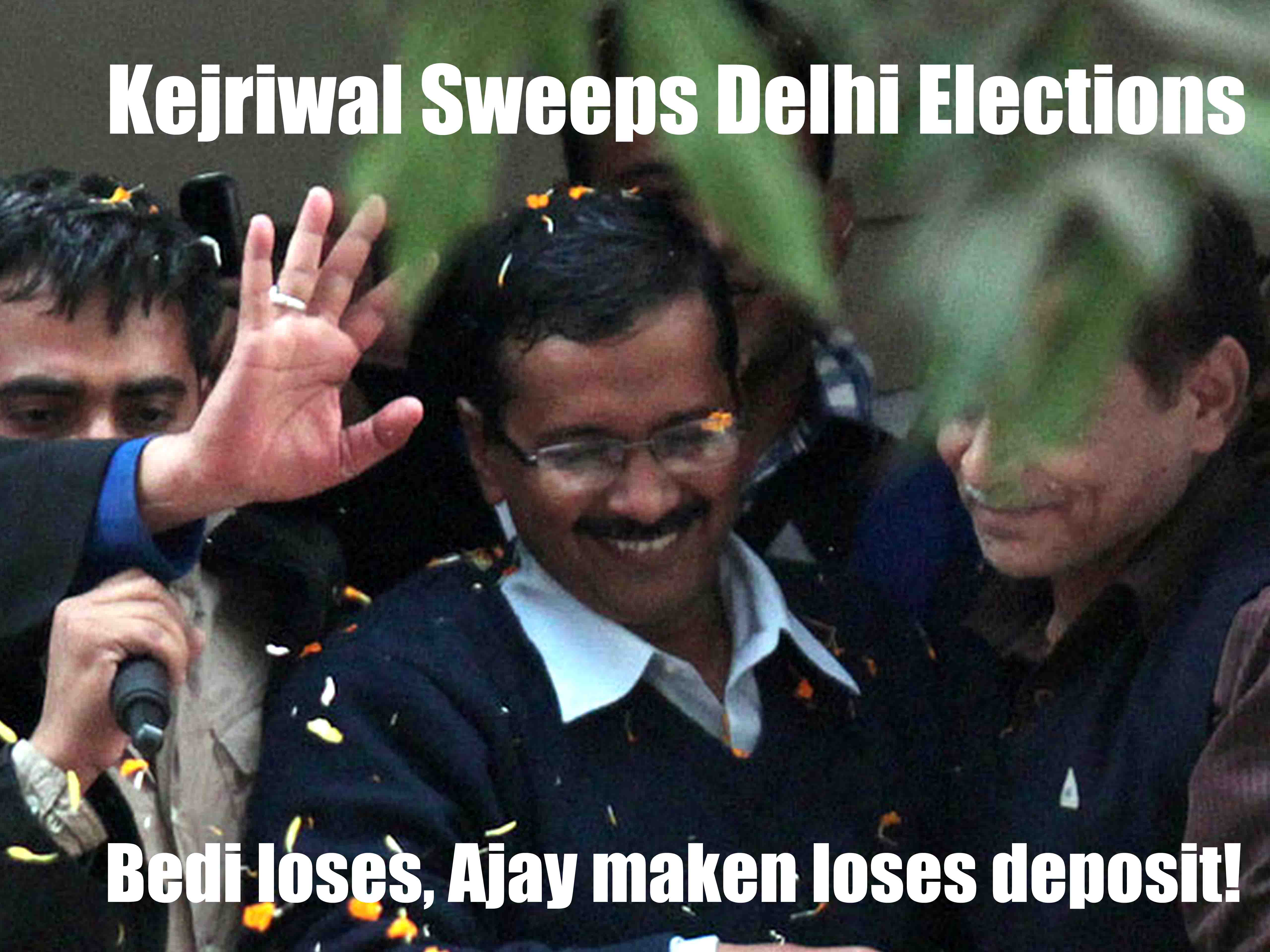

State Bank of India (SBI) has an exposure of $212 million linked to the fraud perpetrated at Punjab National Bank (PNB), SBI Chairman Rajnish Kumar said, adding that the exposure was mainly to PNB and that he did not see any liabilities accruing to SBI as a consequence of the fraud.
“We do not have exposure to (Nirav) Modi. My exposure is to PNB,” Mr. Kumar told mediapersons before inaugurating the Global NRI Center at Kochi on Friday. “We are not worried… the regulator is there, judicial system is there… there is also a categorical statement by the MD of PNB, that all bonafide transactions… they will honour. This is something which will get sorted out between the banks.”
PNB, India’s second-largest lender, was defrauded of ₹11,500 crore through issuances of letters of undertaking (LoUs) in a scam whose dimensions are still unfolding.
Speaking on the sidelines of the press meet, Mr. Kumar said of the SBI group’s $212 million exposure to PNB — connected with the LoU transactions initiated on behalf of firms controlled by Nirav Modi — $90 million was made through SBI’s Mauritius subsidiary. “There has been absolutely no slip up or lapse from our side. We have followed standard operating procedure in this regard.” He added that the bank was “100% confident” of recovering the amount.
Mr. Kumar also separately said SBI had “a small exposure to Gitanjali Gems,” without providing additional details on the nature or extent of that exposure.
The SBI chief observed that risk management in banks was a continuous process.
“We have to keep updating it. Operational risk is unknown, while credit risk is a calculated risk. In operational risk —what hits and when, is unpredictable. The question is what to do when every level of security is breached. That is unfortunate.
“We have to constantly review, upgrade, look for gaps in processes, compliance standards, effectiveness of audit systems… Banking is a complex business. Volumes are large. Risk culture, compliance culture all need to be good.”
Impact of norms
Asked about the impact of recent RBI norms to accelerate recognition of bad loans and initiation of insolvency proceedings he said, “Guidelines have made it easier… there are two key elements to the new norms: whatever the bank feels is sustainable debt needs a rating; two, unless you get back 20% in payment, you can’t upgrade the asset.”
Asked if this would add to the bank’s provisioning burden, he said, “It would not make much of an impact.” He added that exact numbers were being worked out on the nature of the impact.
Mr. Kumar said, “It is important that there are adequate number of benches at the NCLT.” A majority of insolvency cases, taken to the NCLT in the first list shared by the RBI, would likely see completion by the first quarter of FY19, he added.
Recognition of stressed loans at SBI was ‘almost over’, the chairman said adding, “From next year onwards, 2018-19, we will enter into what I call the normal position. Normal for me is 2% or below on gross fresh slippages.”
On additional capital that the government is set to provide public sector banks, he said the amount accruing to SBI would be meant for growth and expansion. “We will raise ₹20,000 crore from the market. The recap amount of ₹8,800 crore is towards growth. It is not needed for provisioning.”
SBI would also look to monetise some of its non-banking assets by FY20. “FY2018-19 will see no IPO from us. The year after, ie FY20, we will go for IPO [of some of our assets], because we believe we can add lot more value before going for IPO. Three companies are prime candidates for the IPO — SBI MF, SBI General, SBI Card.”
Earlier, the bank unveiled its Global NRI Center to help centralise NRI operations for the bank across the country. The centre is meant to be a single-point of contact for all NRI banking related services. To further enhance the experience for its 33 lakh NRI customers, SBI also introduced services such as wealth management, SBI Intelligent Assist, free post box service, SBI Mingle and a remittance facility for U.S.-based customers.
As of January 2018, the bank had an NRI deposit base of ₹1.95 lakh crore.
Asked if interest rates, especially or home loans, would start moving upward after a period that saw declines, he said, “There is no scope for bringing it down further. Whether it will go up or not, we will review the position when our asset liability committee meets this month.”
SBI had merged 5 of its associate banks and Bharat Mahila Bank with itself earlier this financial year. Following the merger, Mr. Kumar said, the branch rationalisation process was ‘almost complete’. “We rationalised about 1,600 branches.” He added that headcount since the merger had dropped from 2.78 lakh to 2.65 lakh currently. “About 3,500 employees opted for the voluntary retirement scheme that was offered. The remaining reached the age of superannuation.”
On the changes to the minimum account balance that customers are required to maintain, he said that a review was going on for the rules determining balance effective April 1. “Monthly average balance requirements may remain the same. Anyway our charges are amongst the lowest.” He highlighted the fact that SBI had 14 crore accounts that were Basic Savings Bank Deposit accounts which attracted no penalties. “A normal savings bank account yields us no more than ₹120 a year. If that customer does 5 transactions in a month using the SBI debit card but in another bank’s ATM, our outgo is ₹1,080 a year. Look at the comparison.”
He added that he expected growth in the infrastructure sector to pick up in fiscal 2018-19. “Things will improve in the roads sector and in renewables. Government spends are increasing.”
(With inputs from G. Krishnakumar. The writer was in Kochi at the invitation of SBI
………………………………………………………………………….
India is currently dealing with what likely is its biggest bank fraud so far.
Companies owned by diamond merchants Nirav Modi and Mehul Choksi are alleged to have swindled Punjab National Bank (PNB) of over Rs11,000 crore ($1.77 billion). Amid speculation and a flurry of reports on the nature and magnitude of the scandal, here’s a basic list of questions and answers on the alleged crime.
When did the fraud take place?
Between 2011 and at least 2017. It was detected in the third week of January 2018, according to the PNB management which approached the Central Bureau of Investigation on Jan. 29.
How was it carried out?
In 2011, it began with a a much smaller amount with a single letter of undertaking (LoU) worth around Rs800 crore.
What is a letter of undertaking?
It is a guarantee that a bank is obliged to repay the loan if the actual borrower—Nirav Modi in this case—fails.
So, were the loans approved by PNB?
The first LoU was issued by two PNB employees on behalf of the bank via SWIFT, sanctioning loans to be disbursed abroad.
What is SWIFT?
Society of Worldwide Interbank Financial Telecommunication, or SWIFT, is a system to send instant messages. Once a foreign bank or a foreign branch of a bank gets the LoU via the SWIFT message, it disburses the loan to the borrower.
Where did it go wrong?
When the credit due was not paid in time, more LoUs were issued on behalf of PNB to offset the payment.
What is “offsetting the payment”?
When the borrower did not repay the first Rs800 crore, the bank ought to have stepped in and booked a default by the group company. Instead, the two PNB employees, who were allegedly party to the fraud, issued more LoUs on behalf of PNB, asking other banks to give out fresh loans to the firms. This continued until two weeks before the whole operation came to light after some of Modi’s employees visited the bank on Jan. 05. The management was caught napping and the overdue loans exceeded Rs11,000 crore.
Are we sure the fraud did not exceed Rs11,000 crore?
“I don’t think so, but we will know after the investigation,” PNB managing director and CEO Sunil Mehta said on Feb. 15. If the probe reveals that the amount exceeded the current estimate, the bank’s liability may increase. “Gross exposure is significantly higher at $1.8 billion, though, at this juncture, it will be difficult to ascertain the financial impact across the banking system as investigations are on,” Edelweiss Research said in a note on Feb.15.
How did the management miss a colossal fraud like this for so many years?
PNB sources say the bank isn’t fully integrated on a Core Banking System (CBS) which could have immediately detected the discrepancy.
What is a CBS?
Gartner defines CBS as a back-end system that processes daily banking transactions, posting updates to accounts and other financial records. It is a centralised software that keeps all records across branches and is capable of generating alerts over any undue activity.
So, India’s second-largest government bank didn’t buy good software?
According to sources, PNB’s integration to a CBS was initiated in 2002. The technology took a decade to become developed. It should have been upgraded by 2012, but wasn’t. It is getting updated now.
Is PNB the only bank without proper CBS?
“Public sector banks continue to grapple with weak systems, raising questions on why the processes are not centralised, unlike most private banks where bypassing CBS is not easy,” Edelweiss said. It added that “the liability on respective banks depends on the investigation’s outcome. Even Bank of India, in the third quarter of financial year 2018, reported stress of Rs9,400 crore pertaining to stand-by letter of credits discounted by its overseas branches.”
So, without good software, the two employees were able to game the system?
Yes, the two individuals apparently colluded with the borrower to wrongfully sanction fresh loans via SWIFT.
Shouldn’t banks have other ways of keeping track?
SWIFT transactions are supposed to be regularly reviewed. PNB sources say there is a system to check SWIFT transactions daily by the manager and a concurrent auditor within the branch, a norm that was not followed. “We have an internal rule wherein officials are rotated within departments, ideally every few months. But the two accused were in the same role in the same branch for seven years. The moot point is, we are at a loss to find out now. So many managers changed, so many auditors and inspectors came and went. How did they bypass everybody?” a PNB official said, requesting anonymity.
Is it the first time that such a fraud had occurred?
No. A bunch of Indian banks faced massive losses due to unpaid loans from Winsome Diamonds, which defaulted for the first time in 2013. The loans given to Winsome, and its associate entity Forever Diamonds, were through similar SWIFT route. However, both Winsome and Forever failed to repay, citing default by customers. The Serious Fraud Investigation Office is probing the case.
Is it possible there were more PNB employees involved?
It is too soon to say. The management has assured investors that it will undertake a forensic audit and look into loans approved under earlier managements, if needed.
Which are the other banks that lent money to Nirav Modi and Mehul Choksi’s firms?
According to sources, Allahabad Bank has the largest exposure—of over Rs4,000 crore. Union Bank has anywhere between Rs1,000 crore and Rs2,000 crore, and the State Bank of India about Rs1,000 crore. Axis Bank has over Rs2,000 crore, though it has already sold off those loans.
What will be the impact of the Rs11,000 crore (or bigger) fraud?
Loss of public faith in PNB and other state-owned banks will be the biggest risk. According to RBI regulations, PNB will have to repay other banks the money owed by the firms. PNB sharesholders may see their wealth eroding further as the Rs11,300 crore liability is more than a third of the bank’s market value. The pain will only increase if the probe reveals a bigger scam. This is besides the taxpayer money that will be lost in litigation and getting Modi and Choksi extradited.
Who will pay for the losses?
Reports say that RBI has instructed PNB to pay other banks for the loans disbursed to Modi and Choksi. Other banks will have to set aside money from their profits till the time PNB coughs up the money, and when it does pay up, PNB’s books will then have to show the amount as loss.
Have Modi and Choksi offered to repay?
The PNB CEO said Modi sent an email seeking time to repay, and the management, in turn, has sought a detailed repayment plan.
Like many from the post-Partition generation of the Indian subcontinent, the Punjab National Bank (PNB) has been a survivor. Seventy years after independence, the bank is just about afloat, weighed down by its bad loans and buoyed by a string of bailouts.
Born of India’s freedom struggle, PNB was established in modern-day Lahore, Pakistan, in 1895, and has coursed through several crests and troughs over its 120-year existence.
However, the bank’s rich history has been besmirched by the $1.77 billion (over Rs11,000 crore) fraud it reported on Feb. 14, besides its gigantic pile of toxic loans, has come as a rude shock. Diamond trader Nirav Modi and his maternal uncle Mehul Choksi, also the chairman of jewellery retailer Gitanjali Group, are alleged to have duped the lender over a period of seven years in connivance with at least two of the bank’s employees.
While the Central Bureau of Investigation and the Enforcement Directorate probe the fiasco, here’s a look at how PNB came to be India’s second largest state-owned bank.
A stellar history
Lala Lajpat Rai, a stalwart of the Indian struggle for independence, played a key role in PNB’s birth. After a fellow member of the Hindu revivalist movement, Arya Samaj, mooted the idea, Rai took it upon himself to spread the word on establishing an organisation run by Indian money and men.
In May 1894, the bank’s founding board was set up and included the who’s who of the day, like Lala Harkishan Lal, one of Punjab’s earliest industrialists, and Dayal Singh Majithia, founder of the English-language daily, The Tribune. When the first branch opened a year later, with a capital of Rs2 lakh and working capital of Rs20,000, Rai was also its first account holder.
PNB’s other customers over the years included India’s first prime minister, Jawaharlal Nehru, and Mahatma Gandhi.
Like other banks around the time, PNB faced its share of hardships. From tiding over the global economic crisis of 1929 to shutting down 92 offices, accounting for over 40% of its total deposits, following Partition in 1947, the bank always came through. In its first 60 years, PNB set up over 270 branches, with deposits totalling over Rs60 crore.
Months before Partition, PNB’s registered office was shifted from Lahore to New Delhi.
In the 1950s and 1960s, it consolidated its position further by merging with others lenders, including Bharat Bank and Indo-Commercial Bank—it has merged with seven other institutions over its lifetime. In 1969, under Indira Gandhi’s prime ministership, PNB, along with 13 other banks, was nationalised. Together, these banks controlled around 70% of India’s deposits at the time.
Today, PNB has nearly 7,000 branches in India alone, and is among Forbes’s list of world’s biggest public companies.
India’s financial institutions keep finding fresh ways to screw up. Punjab National Bank (PNB), the country’s second biggest public sector bank, has uncovered $1.8 billion (about Rs11,363 crore) of “fraudulent and unauthorized” transactions from a single branch in Mumbai. It is astonishing sum, equivalent to almost a third of its market value.
The PNB fraud could spread, too. It provides a fresh impetus to consider governance improvements across the industry.
In the first instance, the PNB fraud disclosed on Wednesday suggests serious problems with PNB’s risk controls. Though details are scant for now, it’s especially galling considering the episode comes fresh on the heels of the pledge of an injection of funds by the government. The headline figure involved represents more than twice what New Delhi promised to the bank as part of a wider Rs2.11 trillion bank recapitalisation plan to prop up the country’s banks after an era of reckless lending.
The scam may have spilled over to rival lenders, too. PNB says “other banks appear to have advanced money to these customers abroad”. In the meantime, it is also mixed up in further allegations. Federal agents have initiated an investigation into billionaire jeweller Nirav Modi, one of the country’s richest men, over accusations that he and others defrauded PNB of Rs11,400 crore.
Given the circumstances, it’s hard to believe the bank could raise additional equity from the capital markets. Depending on the outcome of the fraudulent transactions and the money involved, it puts the burden squarely on India’s taxpayers.
The only good that could come out of the affair would be some fresh consideration to implementing better practices. State lenders oversee about two-thirds of India’s bank assets. Politicians interfere with appointments, meaning institutions have little control over who sits on their boards. This would be one area worth changing.
Chieftains also typically stay in the job for just three years, hardly long enough to preside over genuine change. They’re paid a fraction of their private-sector counterparts. The lower ranks have little financial incentive to enhance performance. Authorities have talked about rewarding employees with stock options, but there has been no action so far. Alongside its recapitalisation, New Delhi promised governance upgrades. These can’t come soon enough.




















